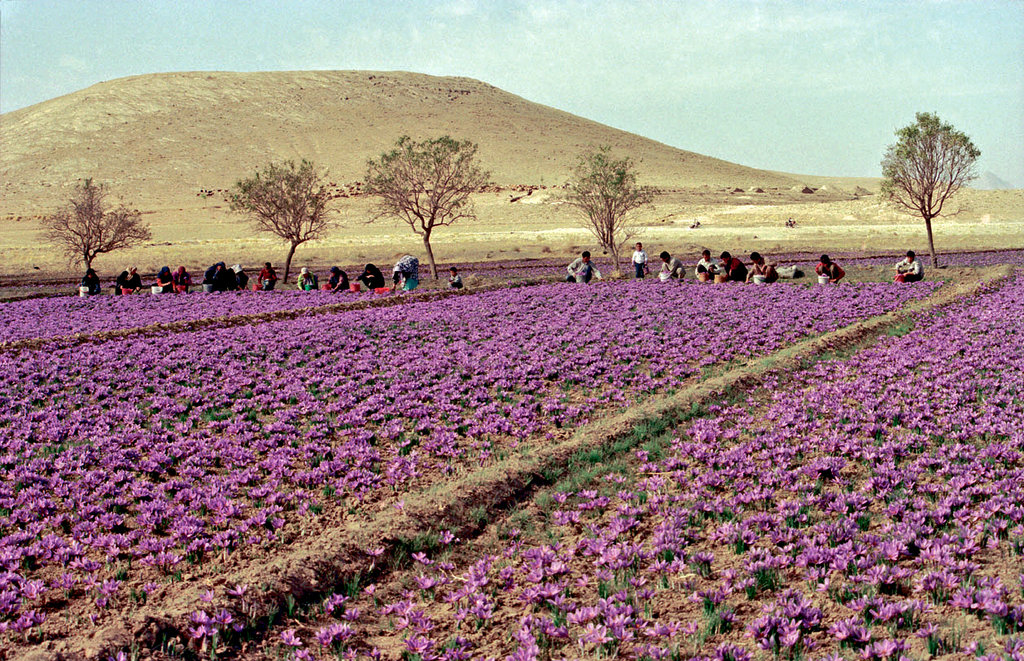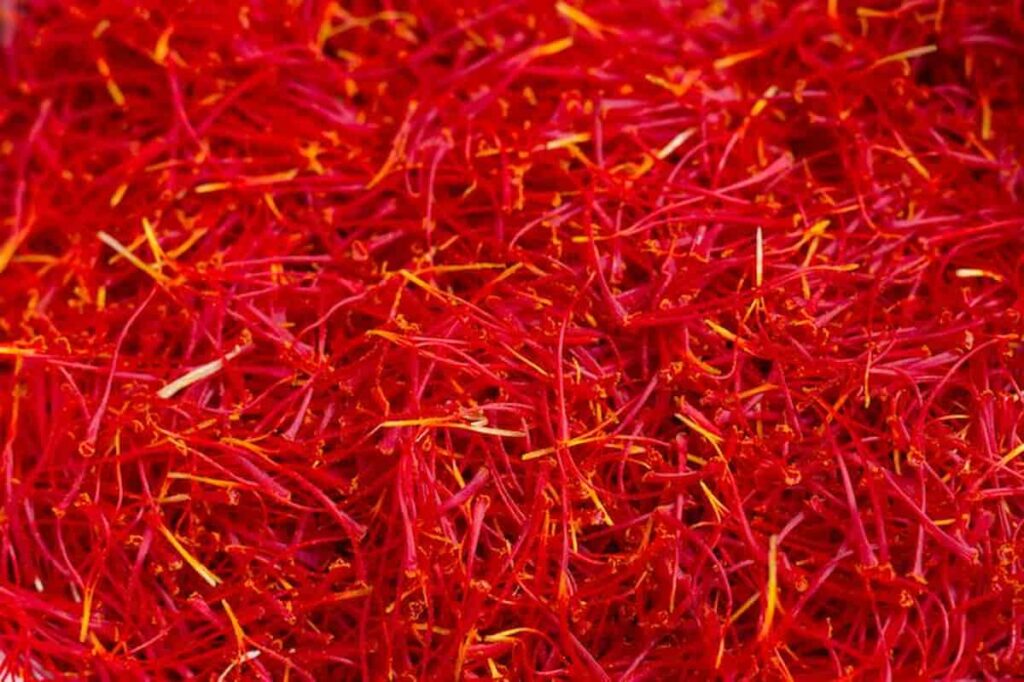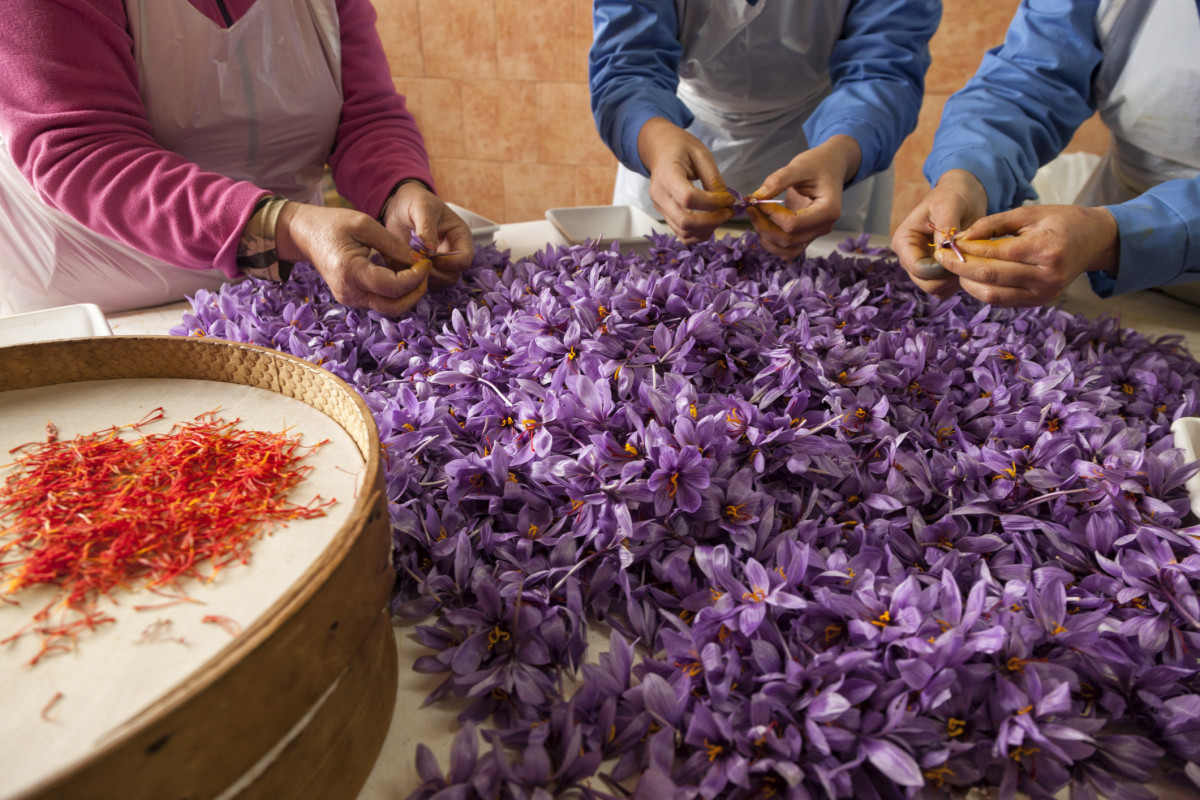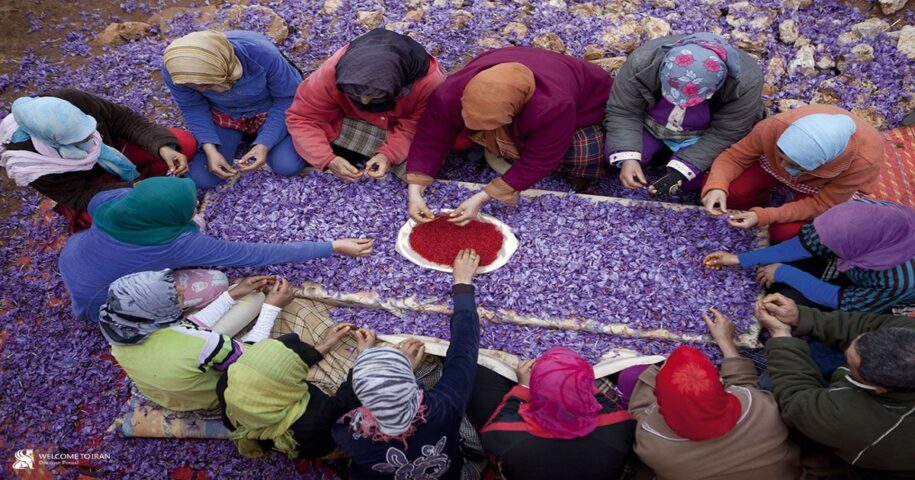Flame-colored saffron, which is known as “red gold,” is very important in Moroccan cooking. Its enticing smell and complex, yet mild, taste take simple tagines to delicious feasts. Unfortunately, saffron is still a mystery to many home cooks. This guide reveals the mysteries of Moroccan saffron and shows you how to buy, use, and add this exotic spice to your food.
The Story of How Moroccan Saffron Got Its Name

Morocco has a very long and interesting past with saffron. The fine threads come from the dried stigmas of the Crocus sativus flower. They were grown in the country for the first time as early as the 1400s. Southern Morocco, especially Taliouine, has a dry climate and lush valleys that are perfect for growing saffron. This has made the area famous around the world for its high-quality saffron.
People love Moroccan saffron for its bright colors, which can run from deep red to bright orange. It has a beautiful smell with earthy, honeyed, and slightly metallic notes. The taste is complicated, with a bit of bitterness balancing out the flower sweetness and hay-like undertones.
How to Get Real Moroccan Saffron

Saffron is one of the most expensive spices in the world because it is so hard to gather—only three precious threads come from each saffron crocus flower. Unfortunately, this high price tag also brings in dishonest sellers who may sell tampered or poor-quality goods. To make sure you’re getting real Moroccan saffron, follow this guide:
- Visual cues: Genuine saffron threads should be long and thin and bright red with orange or even yellow tips. If the red color of the saffron is dull or consistent, it might not be real saffron and could be a colored replacement.
- Aroma: The smell of real saffron is strong and enticing. Not the real thing if the saffron you find has a weak, faint smell or, even worse, no smell.
- Touch: When you touch real saffron, it should feel a little dry and spring back a little. It shouldn’t fall apart or get dirty on your fingers quickly.
- Source: Look for places that sell Moroccan herbs that you can trust, or buy straight from saffron farms in Taliouine.
- Beware of Imitations: Steer clear of any powdered saffron. Real saffron is sold in threads, and grinding it down makes it smell and work much less well. Also, be careful of saffron that seems to be selling for a very low price.
Using Moroccan Saffron in Cooking
Saffron can be used in many different ways in cooking. Here are some delicious ways to use this valuable spice:
- Tagines: A pinch of saffron makes tagines with chicken, lamb, or veggies taste even better. They are a traditional Moroccan dish. The delicate flower notes go well with the rich taste and make the dish better.
- Couscous: Adding saffron to couscous makes it taste more luxurious and gives it more depth, whether you like it meatless with roasted onions or with meat.
- Seafood: The delicate tastes of fish go well with saffron. You could use it in a spicy seafood paella or a fish sauce with Moroccan flavors.
- Rice recipes: Adding a pinch of saffron while making easy rice recipes will make them taste better. This gives it a bright yellow color and a light flower scent.
- Desserts: Some sweet foods in Moroccan food, like sfouf (almond and rosewater pastry), add a little saffron to make them taste different.
Top Tips for Using Moroccan Saffron:
- Less is More: There is a lot of saffron in a small amount. Start with a pinch, which is about three to five threads, and make changes based on your taste and the dish’s size.
- Bloom the Saffron: Before adding the saffron to your dish, soak it for 15 to 20 minutes in warm water or milk to bring out its full taste and aroma.
- Timing is Key: Avoid adding saffron too early in the cooking process because its volatile oils can evaporate if exposed to heat for an extended time. It works best if you add it at the end.
The Allure of Moroccan Saffron

Saffron can be used for more than just cooking. Moroccans used saffron for its healing qualities in the past. They thought it could improve their happiness and help their digestion. Saffron is still used in Moroccan hammam (bathhouse) practices today. It is added to bathwater or scrubs to make people look better, according to tradition.
Exploring the Saffron Beyond the Spice
For daring tourists, a trip to Morocco is a must to see the magic of saffron for themselves. When you go to saffron farms in Taliouine, you can see how carefully the flowers are picked and learn about the rich cultural history of this valuable spice.
The Final Notes: Storing & Substituting Moroccan Saffron
Storing Your Saffron Treasure: If you want to keep the quality of your Moroccan saffron, you need to store it properly. To make sure your saffron stays as strong and fragrant as possible for as long as possible, do the following:
- Keep it dry and cool: Keep your saffron in a container that won’t let air in and keep it out of direct sunlight, heat, and water. The best place is a cool, dark closet.
- Glass is Best: Instead of plastic, use a glass jar with a tight-fitting lid. Plastic can soak up some of the scent of the saffron.
- Think Small Quantities: This spice costs a lot, so most home cooks won’t need a lot of it. To make sure they stay fresh, you might want to buy smaller amounts.
When Substitutes Are Necessary: It might not always be possible to find real Moroccan saffron. You can use the following instead of saffron if you can’t find it or don’t have the money for it:
- Turmeric: Ground turmeric has a similar bright yellow color and a slightly earthy taste, but it is not a true flavor replacement.
- Safflower: The dried florets of the safflower plant smell a bit like saffron and taste a little bitter.
- Paprika: Paprika that has been smoked can add a little smokey flavor and sweetness to some recipes.
Remember that these alternatives can’t match the rich taste of real saffron, so don’t use too much of them and make the necessary changes to your recipe.
Summary
Moroccan saffron isn’t just a spice; it’s an important part of Moroccan culture that has a long past. You can unlock a world of flavor and take your foods to new heights by learning about their history, how to spot real threads, and how to use them in cooking. When you come across this “red gold,” think of the journey it’s been on and enjoy the magic it can bring to your home.


Leave a Reply